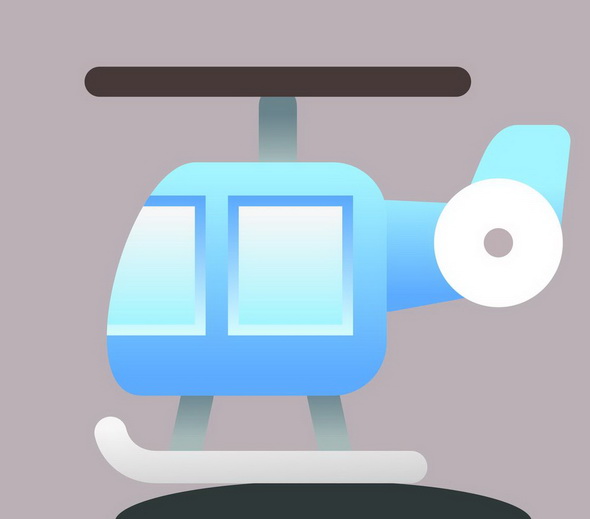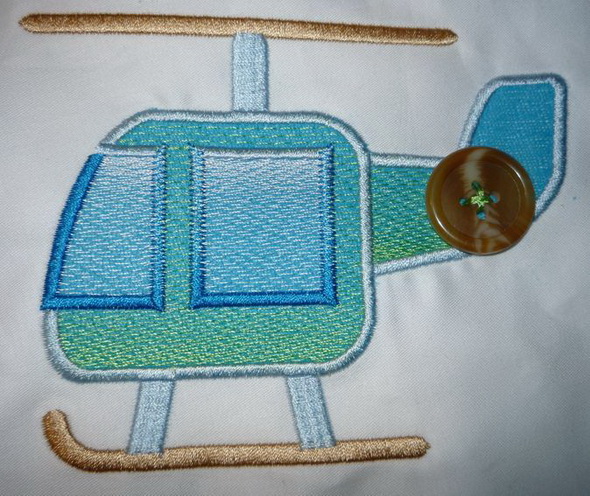Original text by Marina Belova
As I wrote in my article about different types of appliqué in machine embroidery, there is a rare kind of appliqué covered with a low-density fill for the purpose of shading or saving of the stitches.
The making process is rather simple, being an exact replica of the one of the traditional patched appliqué:
- First, you embroider an outline that will show where to place the appliqué fabric. Then the machine makes a stop and the hoop comes out for the fabric.
- The appliqué fabric is secured with running stitches or zigzags. Then the machine makes a stop and the hoop comes out for trimming of the excessive fabric right in the hoop.
- After trimming your embroider the fill on top of the appliqué fabric and the finishing border that covers the edge.
- Digitizing is also simple and differs from the ordinary appliqué only in the creation of an additional fill:
- First, we create an outline that will show where to place the fabric and digitize it with the running stitches (for economy reasons).
- Then insert a stop and the hoop coming out for the fabric.
- After that, we create an outline for the appliqué fabric.
- Then insert a stop and the hoop coming out for trimming.
- Now we add a low-density fill, through which the stitches will show. Remove about 30–50% of our standard density and also all of the underlay.
- Having done that, we create a finishing column.
Everything is very simple and can be achieved in any embroidery editor.
I've long scratched my head over the possible use of this technique, and the only thing I came with was creating flowers:

Today it dawned on me, where I could use an appliqué of this kind, with the lightweight fill on top of it. It's rather obvious – such fills will be good for saving the stitches in big objects with gradients and also for reproducing color gradations with the help of two- and three-color gradients.
So I immediately decided to embroider this helicopter to see how it works:

As you can judge from the image, it only contains very simple shapes. But one wants to give zest to it. So I decided to replace the helicopter rotor with a button (pinched the idea from the Smartneedle designs). I put an appliqué on the background and filled the areas with density gradients in order to make the sole-colored fabric more interesting:

This 13.1x10.5 cm design has about 8000 stitches, which is not much for the design of this size.
In the end, it turns out that such a design doesn't require too much effort, but the result is quite good, especially if you bear in mind the fact that the fabric changes its look under different kinds of stitches (compare the windows and the cockpit).
P.S. My husband says that helicopters do not have rotors in that place. But it's too late now. I'll just let it be.



There are no reviews to display.